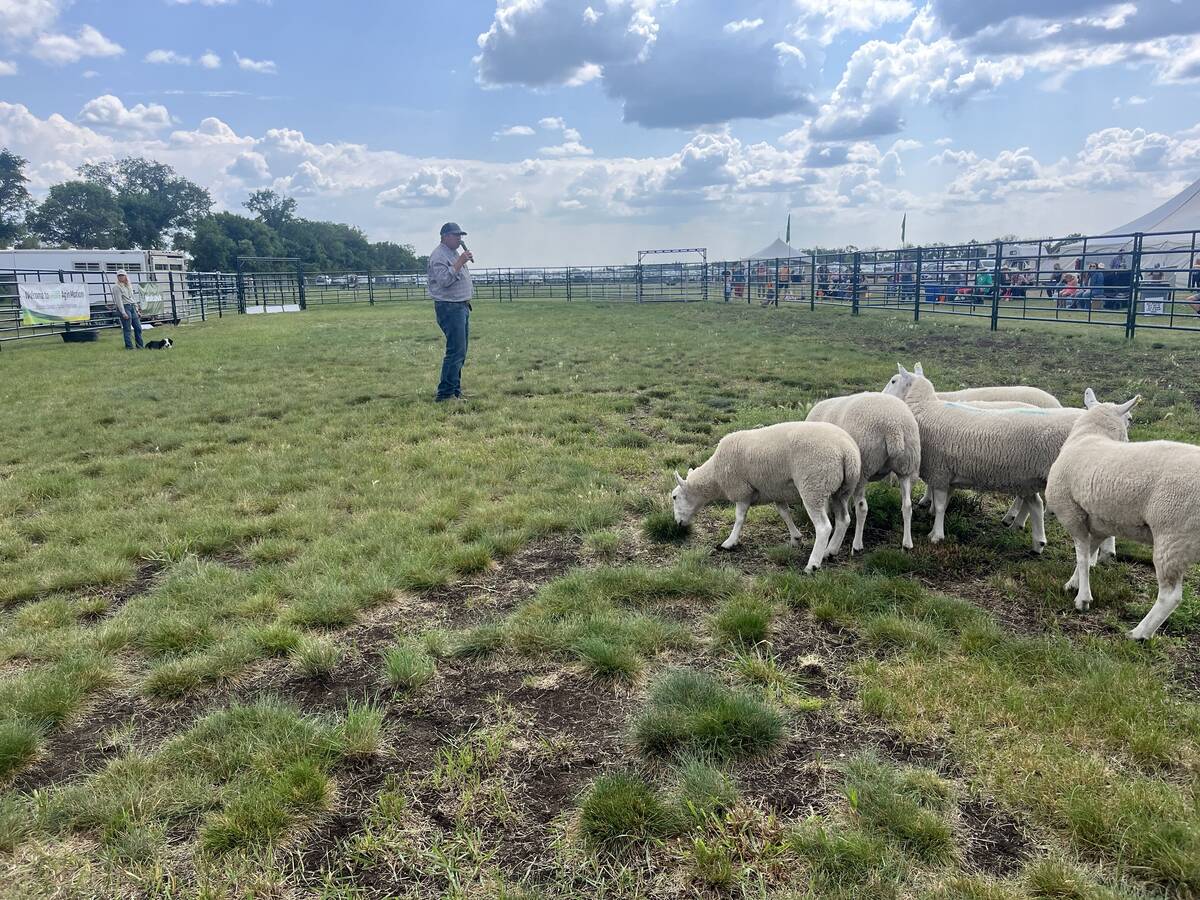The Manitoba government will spend $250 million to regulate water levels on Lake Manitoba, yet a number of farmers around the lake remain frustrated because they haven’t been fully compensated for an intentional flood in 2011.
In late May, Manitoba premier Greg Selinger announced the province would build a drainage outlet at the north end of Manitoba’s third largest lake.
The province will also complete work on an emergency drainage channel that runs from Lake St. Martin to Lake Winnipeg. Effectively, the two projects will move water from Lake Manitoba to Lake Winnipeg when inflows into Lake Manitoba are excessively high.
Read Also

Stock dogs show off herding skills at Ag in Motion
Stock dogs draw a crowd at Ag in Motion. Border collies and other herding breeds are well known for the work they do on the farm.
Construction is expected to begin in 2016 and should be finished by 2021.
“During the largest flood in Manitoba history (2011), the emergency channel brought Lake Manitoba and Lake St. Martin back to regulatory levels within a matter of months,” Selinger said in a statement.
“We know these two projects will be even more effective in regulating water levels on the lakes, protecting Manitobans from increasingly severe and unpredictable weather.”
During a flood of the Assiniboine River in 2011, the province transferred billions of litres of water from the river into Lake Manitoba, via the Portage Diversion.
That was done to minimize flooding in areas downstream from Portage la Prairie, Man.
The decision flooded thousands of acres of low lying land around Lake Manitoba, swamping pasture and hay land, forcing farmers to relocate cattle.
As well, the extremely high water levels destroyed dozens of cottages and other residences around the lake.
Following the flood, landowners and rural municipalities banded together to form a lobby group called the Lake Manitoba Flood Rehabilitation Committee.
Brian Sigfusson, reeve of the RM of Coldwell and a member of the committee, said it would be helpful if the province began work on the drainage channels before 2016.
Nonetheless, the commitment is welcome news.
“I’d like to push that (date) along but I understand there are certain things, such as environmental (assessments), that must be done.”
The committee successfully lobbied for a drain at the north end of the lake but that does not mean its work is done, said Joe Johnson, who farms near Langruth.
“We’re not going to close the committee down,” said Johnson, one of the committee leaders. “The only reason there was compensation (in 2011) for agriculture was because of the constant lobbying we did.”
The committee won’t abandon its efforts until the province digs the channels and the government fulfils its promise of multi-year compensation for affected farmers, Johnson said.
“We got some compensation in 2011 and we were satisfied with that…. We were informed not to worry. We will cover your losses for 2011, 2012, 2013… however many years it takes. (But) 2012 came and not a penny.”
Johnson and other farmers are infuriated with provincial politicians because the government is sticking to the line that multiple factors caused Lake Manitoba to flood in 2011.
The province won’t admit that its decision, to divert water from the Assiniboine River to the lake, caused the flooding, Johnson said.
“There is, of course, a horrendous amount of mistrust with the government…. They change the laws as they see fit and the simple fact that they won’t acknowledge (it was) artificial flooding.”
In addition, Johnson said it’s outrageous that some Winnipeggers describe Lake Manitoba as a “flood plain.” In other words, flooding around the lake is a normal occurrence and landowners must assume the associated risk.
“I’ve got two and a half foot thick oak trees on my farm. They don’t grow on a flood plain.”

















